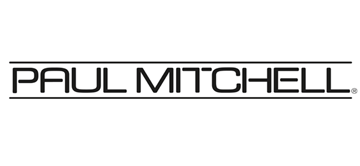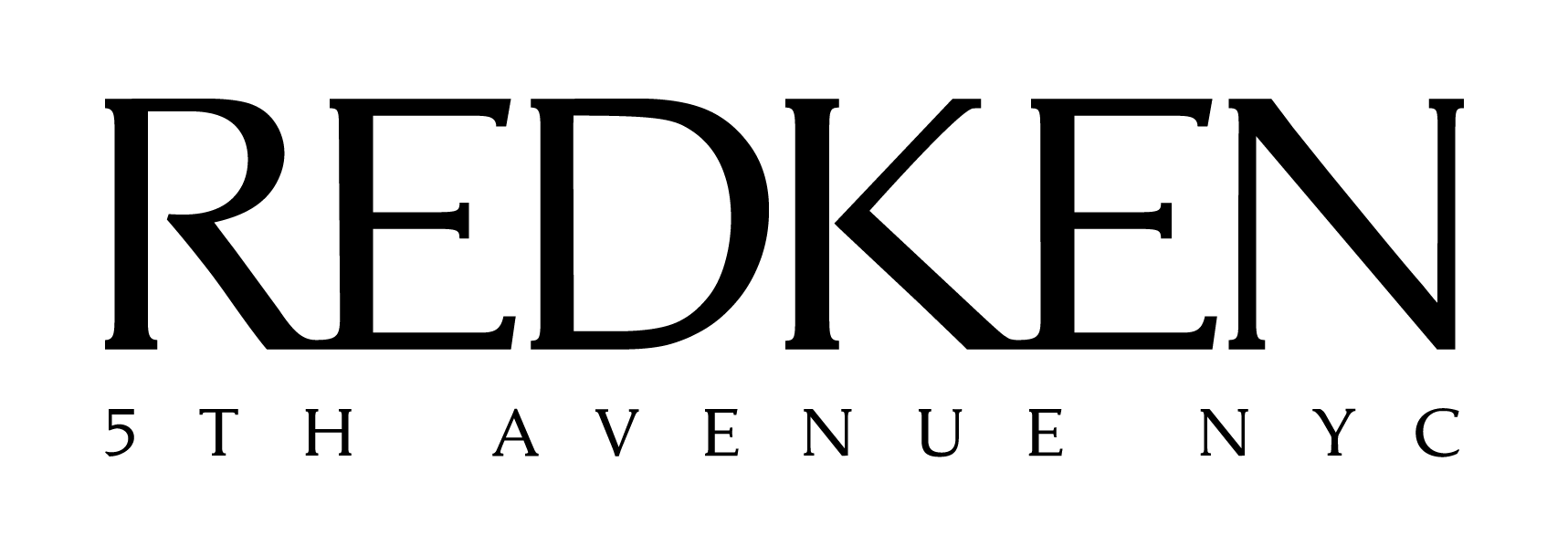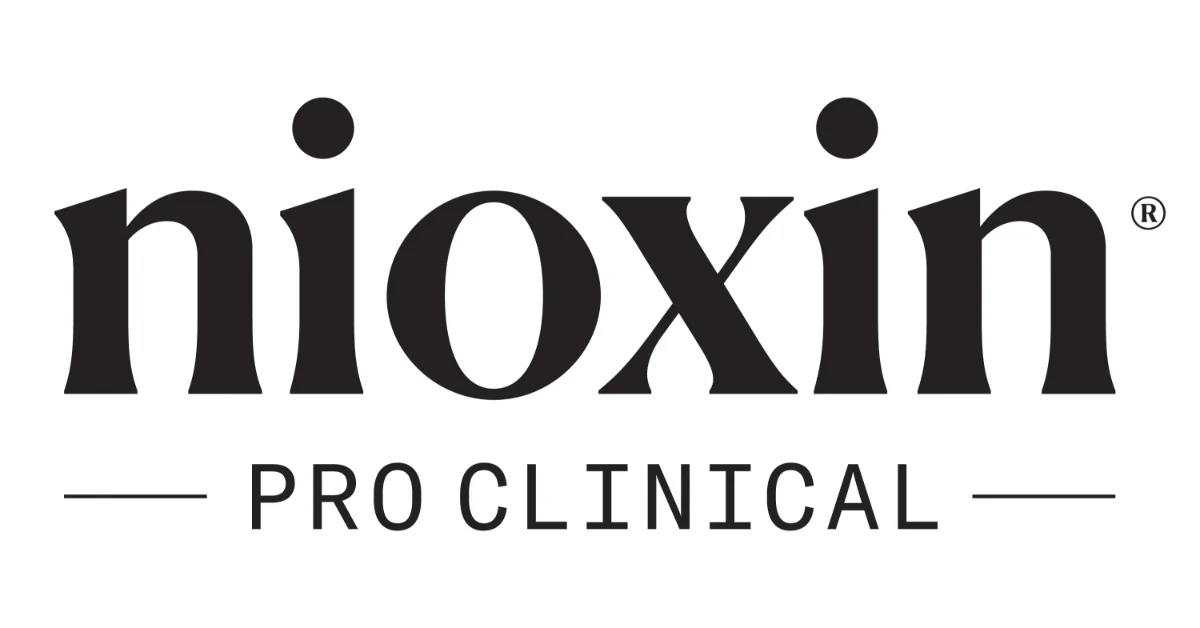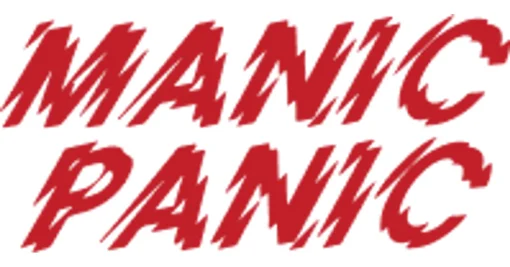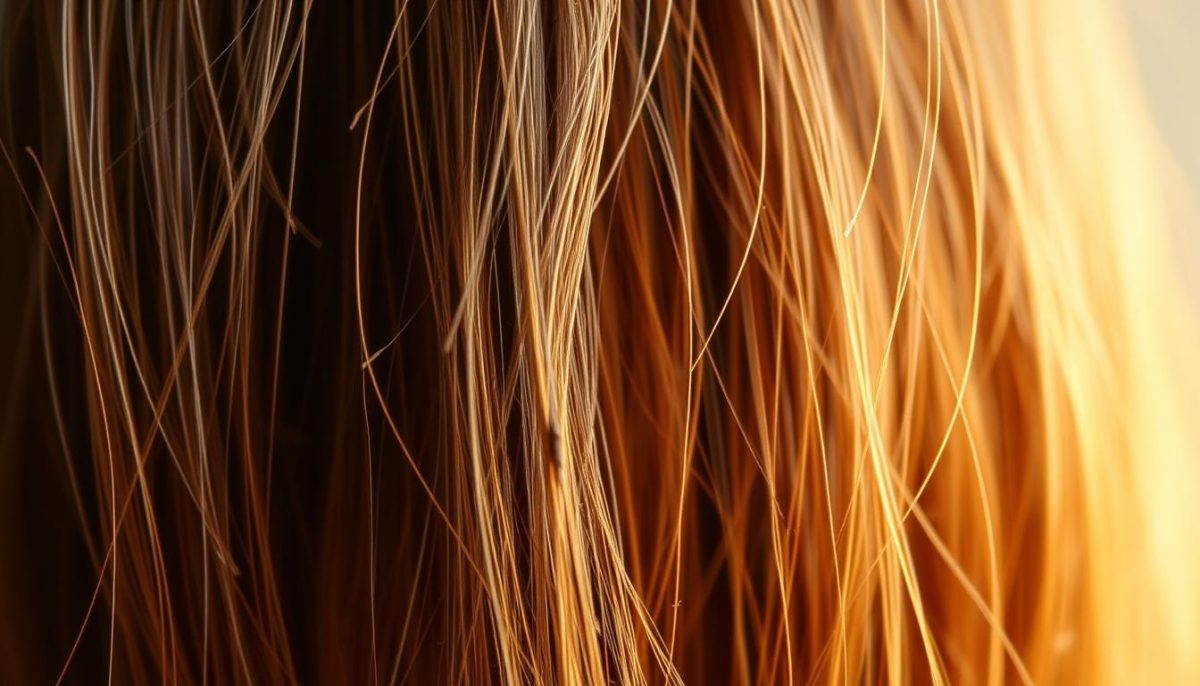FAQs, Hair Treatments, Hare Care
How can I repair damaged or over-processed hair?
Do you ever think your hair routine might be causing damage? Many of us struggle with hair issues. These can come from too much chemical treatment, constant heat styling, or not taking proper care of our hair. It’s really important to figure out why our hair is damaged. This helps us find the right ways to fix it. In this section, we’ll look at how to make our hair healthy again. We’ll focus on healing over-processed hair and how to know the level of damage we’re dealing with.
Key Takeaways
- Understanding causes of damaged hair, including excessive chemical treatments and heat exposure.
- Recognising signs of over-processed hair is vital for timely intervention.
- Effective hair repair starts with practical strategies tailored to individual needs.
- Patience is a key element in the recovery process as we await new hair growth.
- Being informed about our hair’s condition guides us in taking the right treatment steps.
Understanding Damaged Hair
Knowing why hair gets damaged helps us keep it healthy. Hair can be harmed in many ways, leading to clear signs of damage. We’ll look into the reasons behind hair deterioration and the types of damage you might see.
What Causes Hair Damage?
Our hair goes through a lot every day. Some common reasons for hair damage are:
- Chemical damage from dyes, bleaching products, and chemical treatments like perms and relaxers can strip natural oils, leaving hair weak and brittle.
- Thermal damage occurs when we frequently use heat styling tools such as straighteners, curling irons, and blow dryers, making hair prone to over-drying and breakage.
- Mechanical damage arises from everyday actions like brushing, tying hair painfully tight, or even using the wrong accessories, which can lead to split ends and excessive breakage.
Signs of Damaged Hair
Spotting damaged hair early lets us fix it before it gets worse. Some common signs are:
- Dryness and lack of shine
- Increased frizz
- Split ends
- Breakage and thinning around the strands
Types of Damage: Chemical, Thermal, and Mechanical
It’s good to know the different types of hair damage. This makes taking care of our hair easier. Here’s a brief look:
| Type of Damage | Description | Common Causes |
|---|---|---|
| Chemical Damage | Damage resulting from harsh chemical treatments | Dyes, bleaching, perms, relaxers |
| Thermal Damage | Damage caused by high heat exposure | Blow drying, flat ironing, curling |
| Mechanical Damage | Damage from physical manipulation | Brushing, tying hair tightly, rough towel drying |
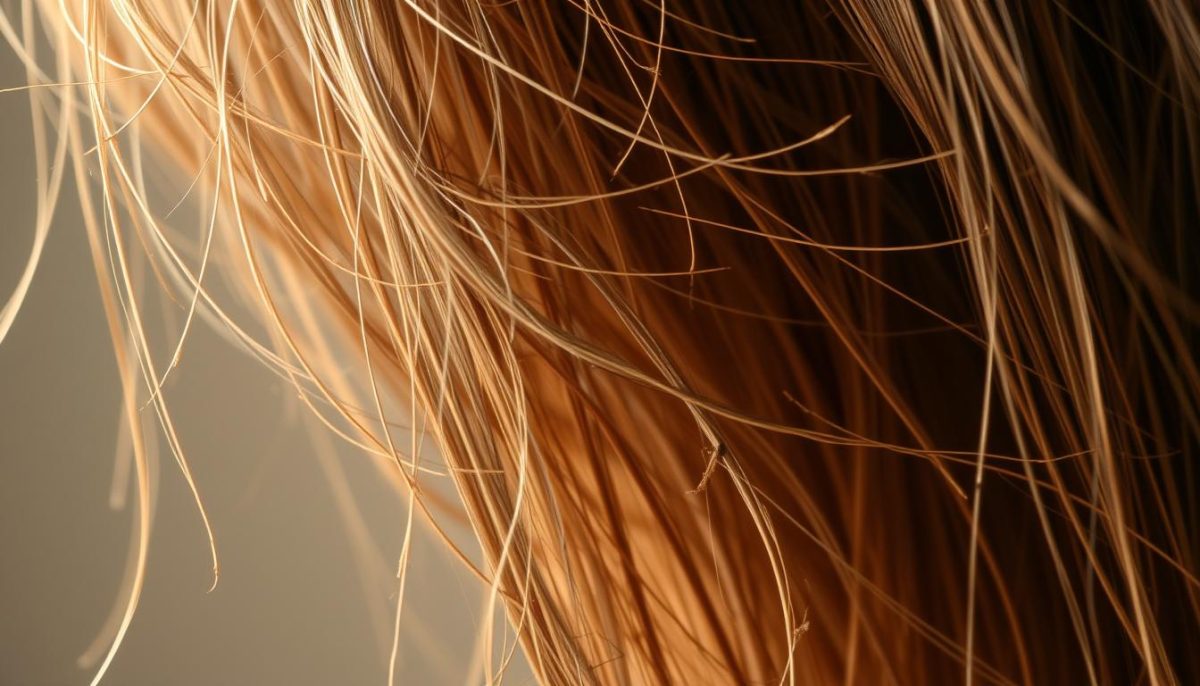
Assessing Our Hair’s Condition
Knowing the state of our hair is key for a good care plan. Simple tests can help find out our hair’s health. This means we can choose the best care practices.
DIY Hair Damage Tests
We can test our hair at home easily. Here’s how:
- Elasticity Test: Stretch a small piece of dry hair gently. If it goes back to its original size without breaking, that’s a good sign. But if it breaks, your hair might be damaged.
- Float Test: Drop your hair strands into a glass of water. If they stay afloat, your hair might be damaged as it’s not absorbing moisture. If they sink, your hair is likely in good condition.
- Shine Test: Look at your hair’s shine. Damaged hair often looks dull or brittle, which suggests it might need more care.
When to Seek Professional Help
There are times when we need a pro’s help. This is especially true if you notice:
- Too much hair loss or thinning
- Dryness or frizz that won’t go away with treatment
- Breakage and split ends, even after home care
- A lot of hair falling out during brushing or washing
If you see these signs, get help fast. Experts can offer treatments we can’t do by ourselves.
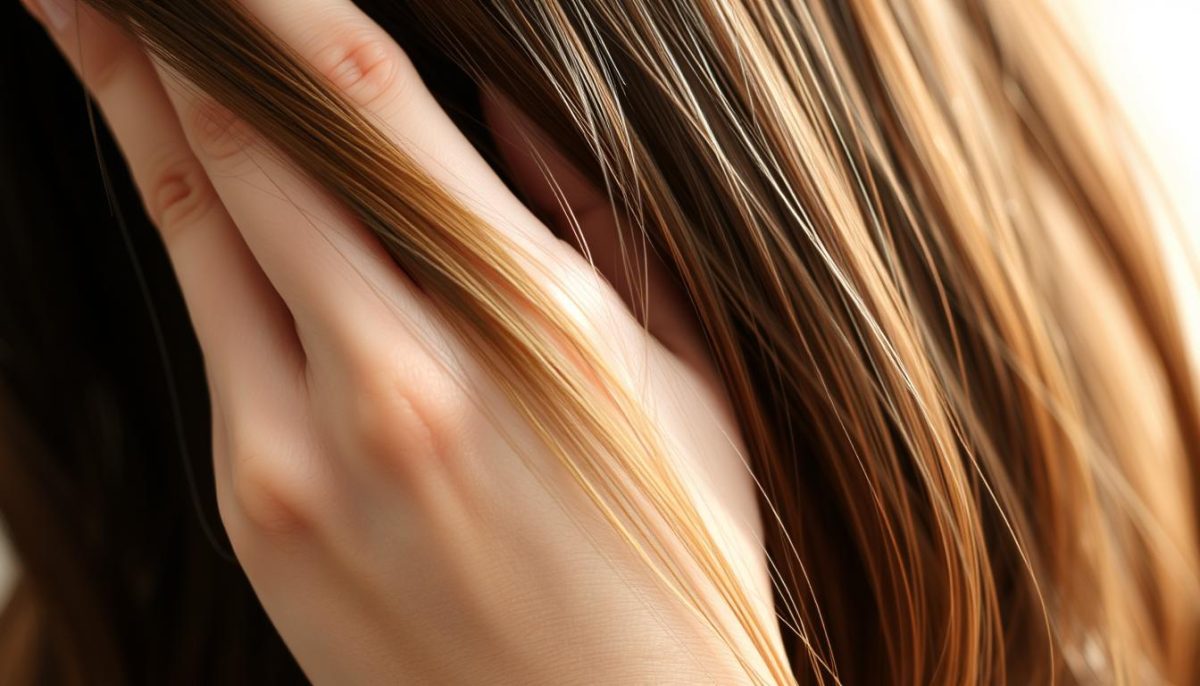
Everyday Practices for Healthier Hair
Looking for vibrant and healthy hair means we need a good hair care routine. Using gentle ways to wash and choosing the right shampoo and conditioner are key. These steps help us avoid damage and keep our hair in top shape.
Gentle Washing Techniques
Using gentle techniques to wash our hair stops it from breaking. It’s important to wash softly, not roughly. Let’s look at a few tips to make washing our hair better:
- Use lukewarm water, as hot water can strip hair of natural oils.
- Massage the scalp gently to promote circulation while protecting the strands.
- Limit washing frequency to maintain natural moisture levels.
- Rinse thoroughly to ensure no product residue remains.
Choosing the Right Shampoo and Conditioner
Picking the right shampoo and conditioner for our hair type is critical. If we choose products for our specific hair needs, like for damaged hair, they can help our hair get better and grow. Think about these points when picking your shampoo and conditioner:
| Hair Type | Recommended Shampoo | Recommended Conditioner |
|---|---|---|
| Fine Hair | Volume-enhancing shampoo | Lightweight conditioner |
| Curly Hair | Moisturising shampoo | Curl-defining conditioner |
| Colour-treated Hair | Colour-safe shampoo | Deep-conditioning treatment |
| Damaged Hair | Repair-focused shampoo | Protein-rich conditioner |
Adding these healthy hair practices into our life helps keep our hair looking great. Being consistent is key for seeing long-term benefits.
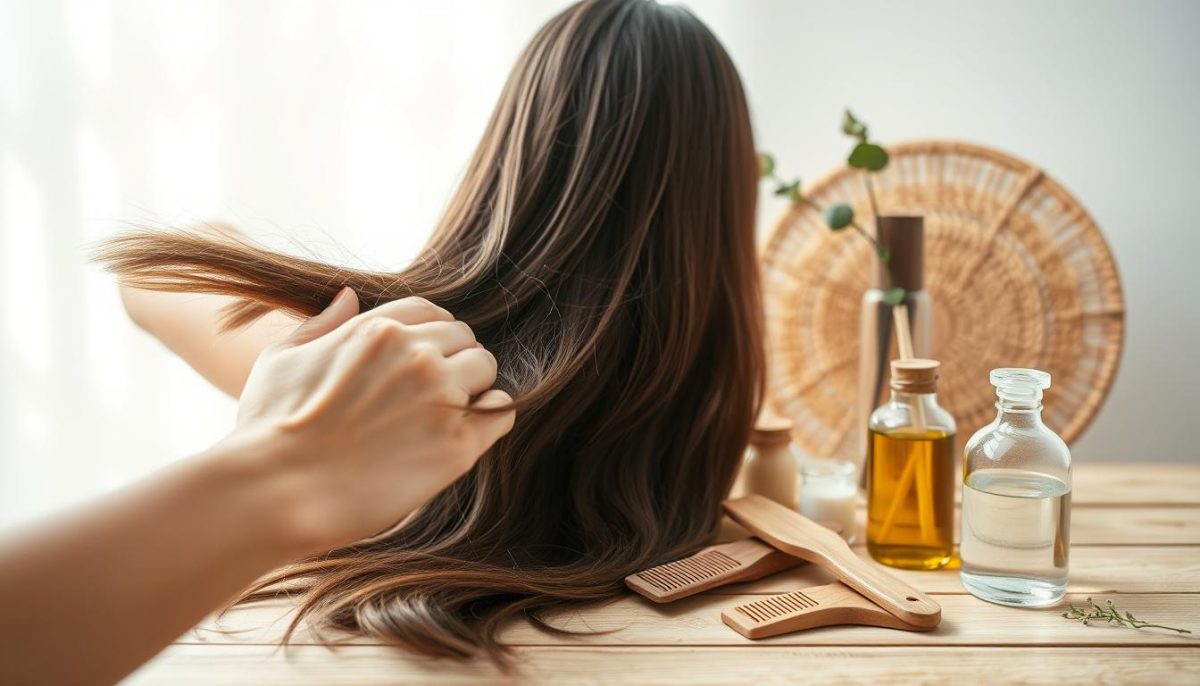
Deep Conditioning Treatments
Deep conditioning treatments work wonders for your hair. They’re essential for adding moisture and improving hair health. With the right ingredients, your hair becomes shinier, more elastic, and easier to manage.
Benefits of Deep Conditioning
Deep conditioning is more than just moisturizing. It gets deep into your hair, delivering nutrients that help fix damage. This can be from heat, chemicals, or the environment. Using them regularly can make a big difference:
- Improved hair texture and softness
- Reduced breakage and split ends
- Enhanced colour retention for treated hair
- Increased elasticity, allowing hair to bounce back after styling
Some of the best deep conditioners have natural oils, proteins, and vitamins. Options like Olaplex and Aussie Miracle Moist are highly recommended.
How Often Should We Deep Condition?
How often you deep condition depends on your hair’s condition. For damaged or dry hair, once a week or every other wash is good. If your hair is healthier, every two weeks to once a month is enough. Pay attention to how your hair reacts to find what works best.
Here’s a guide to help figure out how often you should condition:
| Hair Type | Conditioning Frequency |
|---|---|
| Severely Damaged | Once a week |
| Moderately Damaged | Every 1-2 weeks |
| Healthy | Once a month |
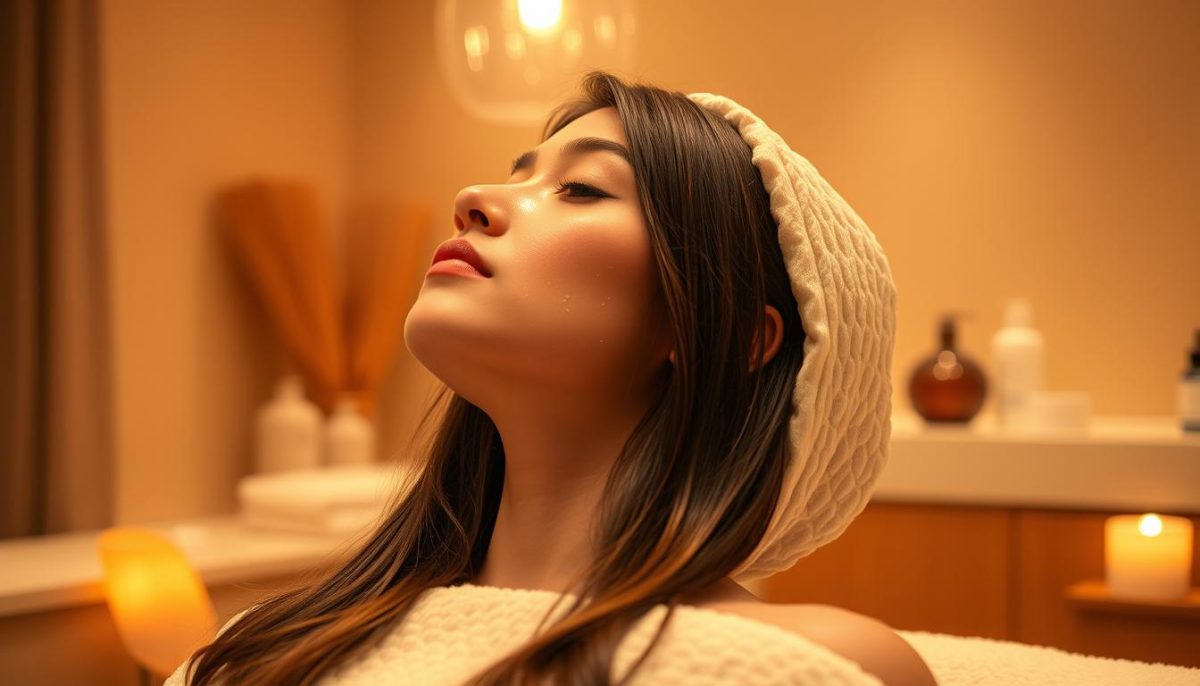
Natural Remedies for Repairing Hair
Looking for ways to bring life back to your hair? Natural remedies are a great choice. Coconut oil and avocado masks are among the best. They nourish and repair damaged hair, making them must-haves in your hair care routine.
Coconut Oil: A Miracle Worker
Coconut oil is amazing for moisturising your hair. It gets deep inside your hair, hydrating it right where it’s needed. Use it before you wash your hair or leave it overnight for extra nourishment. It fights frizz and gives your hair a shiny, healthy look.
Avocado Hair Masks for Nourishment
Avocado masks are also great for your hair. They’re full of vitamins and good fats that make your hair strong. Just mix ripe avocado with some olive oil and put it in your hair. After about 30 minutes, wash it out. Your hair will feel softer and easier to manage.
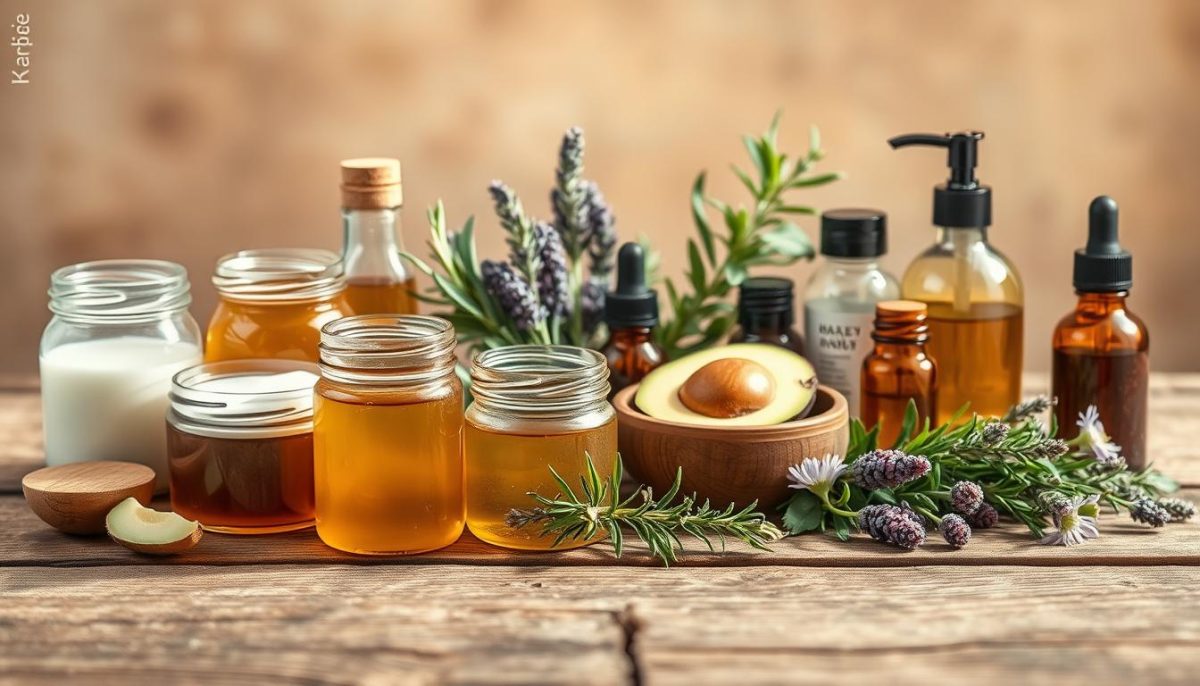
Professional Treatments for Damaged Hair
If your hair is damaged, getting professional help can really change things. Salons offer many treatments aimed at making your hair healthy and lively again. Keratin treatments are especially popular for making hair strong and smooth right away.
Salon Options: Keratin Treatments
For hair that’s frizzy, weak, or damaged by too many treatments, keratin is a game-changer. It puts keratin, a natural protein, back into your hair. This can reduce frizz by up to 95% and cut down on how long it takes to style your hair. More than that, keratin seals your hair, keeping it safe from things that can harm it.
The Role of Hair Rehab Programs
Besides keratin, salons have hair rehab programs for really damaged hair. These programs use different treatments and give advice on how to care for your hair at home. They look at what your hair specifically needs to get healthy again, making it stronger and tougher. By sticking with these programs, you learn how to keep your hair healthy in the long run.
The Importance of a Healthy Diet
Looking closely at our hair health diet shows the big role nutrition has in keeping hair vibrant and healthy. Eating foods rich in essential nutrients makes our hair stronger and look better. It’s key to know which nutrients help the most for anyone wanting great hair.
Nutrients Essential for Hair Health
Our hair needs a variety of vitamins, minerals, proteins, and fats to grow well. Here are some important essential nutrients for hair:
- Protein: Since hair is mostly protein, eating things like fish, eggs, and legumes can improve hair structure.
- Iron: Low iron can cause hair loss. Eating red meat, spinach, and lentils raises our iron levels.
- Vitamins A and C: These help produce sebum to keep hair moist. Find them in carrots, sweet potatoes, and citrus fruits.
- Omega-3 fatty acids: They feed the hair roots and add shine. Good sources are fatty fish, walnuts, and flaxseeds.
Foods to Include in Our Diet
Adding certain foods for healthy hair to our meals can really help. Here are some foods that are good for hair:
| Food | Benefits for Hair |
|---|---|
| Salmon | Rich in Omega-3 fatty acids and protein for strong hair. |
| Spinach | Packed with iron and vitamins for a healthy scalp. |
| Eggs | Lots of protein and biotin, crucial for growing hair. |
| Sweet Potatoes | They have beta-carotene, turning into vitamin A. |
| Walnuts | They give us Omega-3s and biotin for better hair health. |
Choosing to eat these foods for healthy hair helps us support our hair from the inside. This leads to healthier and more lively hair.
Protective Hairstyles to Minimise Damage
Protective hairstyles help reduce damage. They keep our hair safe from the wear and tear of daily styles and the environment. Choosing hairstyles that keep our hair strong is key. Low-tension styles also prevent hair breakage by not pulling too hard. They let our hair rest and stay healthy. We’ll share some cool, low-tension hairstyles and tips to protect your hair during sleep.
Ideas for Low-Tension Styles
- Loose Buns: A classic look that keeps hair in place without too much pull.
- Twisted Updos: Twist and pin hair up for a stylish yet gentle option.
- Sewn-in Braids: Gently braided hair that stays put comfortably.
- Cornrows: They lay flat and ease the tension on hair.
- Headwraps: Fashionable and protective from the elements.
How to Protect Our Hair While Sleeping
To keep hair safe at night, it’s wise to follow a few key steps. These methods ensure our hair stays healthy and reduces damage caused by friction. Let’s dive into how to take care of your hair as you sleep.
- Silk Pillowcases: Silk pillowcases cut down on friction, which helps stop breakage and frizz.
- Protective Wraps: A silk or satin scarf can protect your hair from rough bedding.
- Loose Braids: Braiding your hair lightly can prevent knots and safeguard the ends.
- Moisturise Before Bed: A bit of leave-in conditioner keeps hair moisturized all night.
Tools and Products to Avoid
When looking after our hair, knowing what not to use is just as important. Some styling tools and ingredients can actually harm our hair. Let’s talk about the tools and ingredients that could be bad for our hair.
Heat Tools: When to Say No
Heat styling tools can make our hair look great but too much heat is bad. It can make hair weak and break easily. To keep hair healthy, use these tools less often and follow these tips:
- Use a heat protectant spray whenever heat is necessary.
- Opt for lower temperature settings to reduce damage.
- Limit usage to special occasions instead of daily styling.
Ingredients to Watch Out For
Be careful when buying hair products. Some ingredients can dry out hair and make it break. Here’s what to stay away from:
| Ingredient | What it Does |
|---|---|
| Alcohols | Can strip moisture from hair, making it dry and brittle. |
| Sulfates | Harsh cleansers that can lead to dryness and irritation of the scalp. |
| Parabens | Potential irritants that may disrupt normal hair growth. |
To keep our hair looking beautiful and healthy, avoid certain tools and ingredients. This will help improve our hair’s health and keep it looking good.
Hair Care Routine Adjustments
Improving hair health means changing our hair care in effective ways. We can craft routines tailored to our hair’s specific needs. By figuring out what’s harming our hair, we can pick the best practices and products to help it heal.
Tailoring Our Routine for Specific Damage
Different types of damage need different care strategies. It’s key to know what our hair needs for the perfect care plan. For example:
| Type of Damage | Recommended Adjustments |
|---|---|
| Chemical Damage | Incorporate protein-rich treatments and avoid harsh chemicals. |
| Heat Damage | Limit heat styling tools and use heat protectants when necessary. |
| Mechanical Damage | Opt for gentle detangling methods and avoid tight hairstyles. |
The Role of Consistency in Repair
Being consistent is key to seeing great results in hair care. Using the right treatments regularly helps make our hair strong and lively again. Whether it’s moisturizing daily or deep conditioning weekly, sticking with it brings the best benefits. Dedicated care can turn damaged hair into healthy locks.
Hydration: The Key to Healthy Hair
It’s vital to keep your hair hydrated for it to look and feel healthy. Water is super important for hair health. Without enough moisture, hair can get dry, fragile, and easily damaged.
Importance of Water for Hair Health
Drinking plenty of water every day is key for healthy hair. If we’re hydrated, our hair looks better. Water helps get nutrients to our hair roots, making them grow strong and healthy. It’s easy to forget, but hydration is really important for shiny, strong hair.
Hydrating Products We Should Use
To help our hair stay moist, we can use special hair products too. Look for things like aloe vera, hyaluronic acid, or glycerin in products. They help keep moisture in your hair. Using deep conditioners and leave-in conditioners also helps keep our hair well-hydrated and looking good.
Bumble and Bumble Hair Repair Products
Bumble and Bumble shines when it comes to fixing hair. They make special products to help with different hair problems. This is great for those of us who have damaged hair from styling, dyeing, or the environment. The brand is known for its high-quality and innovative products, which many in the hair care world love.
Why We Love Bumble and Bumble
We love Bumble and Bumble because they focus on creating effective hair repair products. They use ingredients that help nourish and fix our hair. Plus, they cater to all hair types – straight, wavy, or curly. This means everyone can find something that works for them.
Recommended Bumble and Bumble Products for Repair
We have discovered several Bumble and Bumble products that are great for hair repair:
| Product | Description | How to Use |
|---|---|---|
| Bumble and Bumble Hairdresser’s Invisible Oil | A weightless blend of six oils that transforms dry, brittle hair. | Apply a few drops to damp hair before styling. |
| Bumble and Bumble Repair Blow Dry | A cream that provides heat protection while deeply conditioning. | Work evenly through damp hair before blow-drying. |
| Bumble and Bumble Quenching Moisturizing Shampoo | A gentle shampoo designed to hydrate and soften dry hair. | Massage into wet hair and rinse thoroughly. |
| Bumble and Bumble Restorative Treatment | A deep-conditioning treatment that offers intense repair. | Use weekly on damp hair, leave for a few minutes, then rinse. |
Using these Bumble and Bumble products really changes things for us. They help our damaged hair get strong and healthy again. It makes us feel refreshed and confident.
Reviving Colour-Treated Hair
Coloured hair needs special care to stay bright and healthy. Starting with the right care routine is key to keeping those colours looking good. We must focus on practices that help maintain the colour and protect the hair from damage.
Special Care for Coloured Hair
To keep our hair’s colour looking amazing, protecting it from things like sun and heat is important. Choosing shampoos without sulfates and using conditioners meant for coloured hair keeps it moist and vibrant. Using products with essential oils or keratin strengthens our hair and keeps the colour from fading.
How To Maintain Vivid Colours Without Damage
To keep our hair colour bright, we can do a few things:
- Wash hair with lukewarm or cool water to keep the colour in.
- Stay away from too much sun and chlorine.
- Pick heat styling tools with adjustable heat settings.
- Use treatments made just for coloured hair.
By using a careful approach, we not only save our colour but also make our hair healthier. Taking a bit more care ensures our hair remains lively and stunning!
| Practice | Benefits |
|---|---|
| Sulfate-free products | Gentle on colour, prevents fading |
| Cool water washes | Keeps moisture, keeps colour bright |
| Heat protection spray | Reduces harm from styling tools |
| Regular trims | Gets rid of split ends, looks better |
Embracing Our Natural Hair
Embarking on the journey of embracing our natural hair is important. We should celebrate our unique textures. Every type of hair is beautiful and deserves love and care.
By opting for natural hair care, we embrace both health and individuality. It’s a step towards appreciating what makes us unique.
Celebrating Our Hair’s Unique Texture
Every hair strand tells a part of our story. Going natural lets us see our hair in its true form. It frees us from trying to fit into common beauty standards.
It helps us love our curls, waves, and coils. With the right care, our hair becomes a reflection of who we really are.
How to Transition to Natural Hair Care
Switching to natural hair care can be easy if we do it right. First step is cutting down on chemicals. This helps our hair get back to being healthy.
Choosing products with natural ingredients is crucial. It supports our hair’s growth and keeps its natural look vibrant.
- Start gradually: Begin by reducing the use of heat tools and chemical relaxers.
- Moisturise regularly: Use hydrating products to keep natural hair hydrated and healthy.
- Embrace protective styles: Consider braiding or other styles that minimise manipulation.
- Seek support: Join communities that focus on natural hair for shared experiences and tips.
Hair Supplements: Do They Work?
The talk about hair supplements is pretty loud these days. We all think about if these things really help our hair get stronger and healthier. Lots of brands are out there making big promises. Let’s check out some popular hair supplements and share experiences from trying different ones.
Popular Hair Supplements to Consider
Many hair supplements are buzzing for their repair and growth benefits. Here are some top picks:
- Viviscal – Famous for helping hair grow, it’s packed with sea proteins and nutrients.
- Nutrafol – This brand tackles hair loss causes with herbs and nutrients mix.
- Hairfinity – It’s loaded with vitamins and herbs to boost hair health and growth.
Our Experience with Various Brands
We’ve tried many hair supplement brands and noticed different results. Each brand’s formula is unique. Here’s what we found:
| Brand | Key Ingredients | Results Noticed |
|---|---|---|
| Viviscal | Marine complex, vitamins, minerals | Improved hair thickness and reduced breakage |
| Nutrafol | Botanical ingredients, vitamins | Stronger, healthier growth; more resilience |
| Hairfinity | Vitamins, minerals, herbal blend | Enhanced shine; noticeable growth after consistent use |
Patience in the Repair Process
Starting our journey to mend our hair requires patience. Knowing how our hair grows helps us understand why it takes time to see changes. Hair grows about 15 centimetres a year, so changes won’t be quick. This knowledge makes it easier for us to accept the pace of our progress as we care for our hair.
We often forget the importance of being realistic about hair care. Wanting quick fixes is common, but true improvements take time. Recognizing that repair times vary by hair type, damage level, and chosen treatments helps us set better goals. This way, we avoid feeling frustrated without cause.
Getting healthier hair is a slow journey, needing our dedication and understanding. With patience for hair repair, we’ll know improvements are slow but sure. Let’s celebrate every small victory on our way to stronger, healthier hair together.

